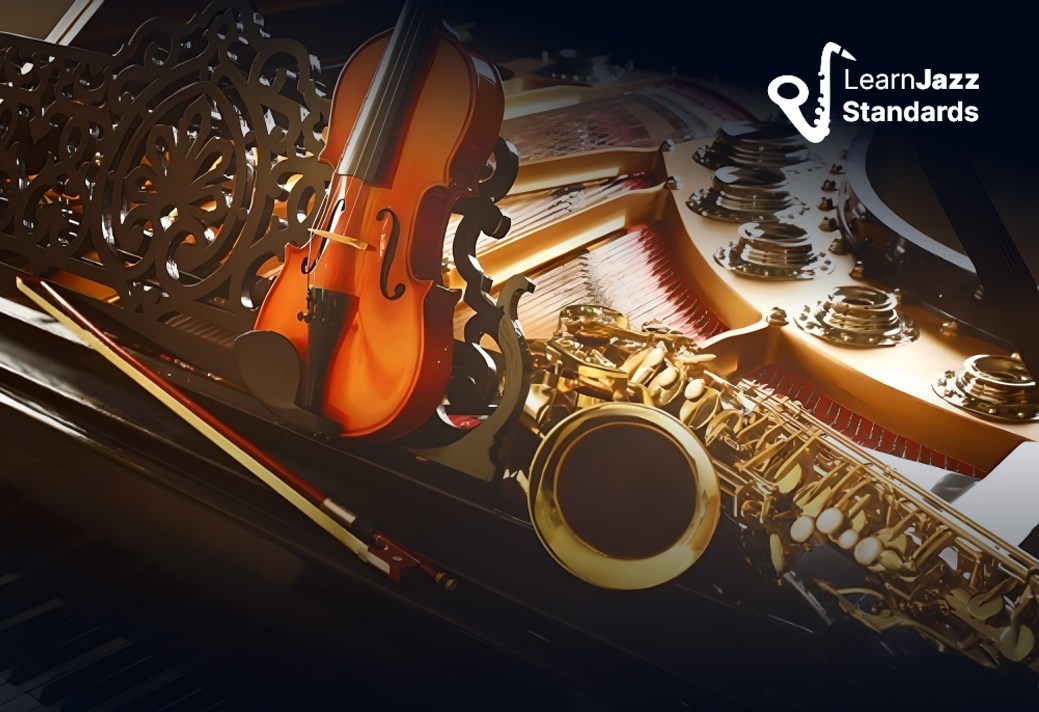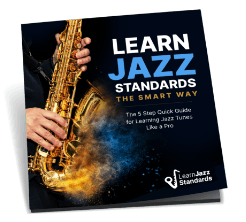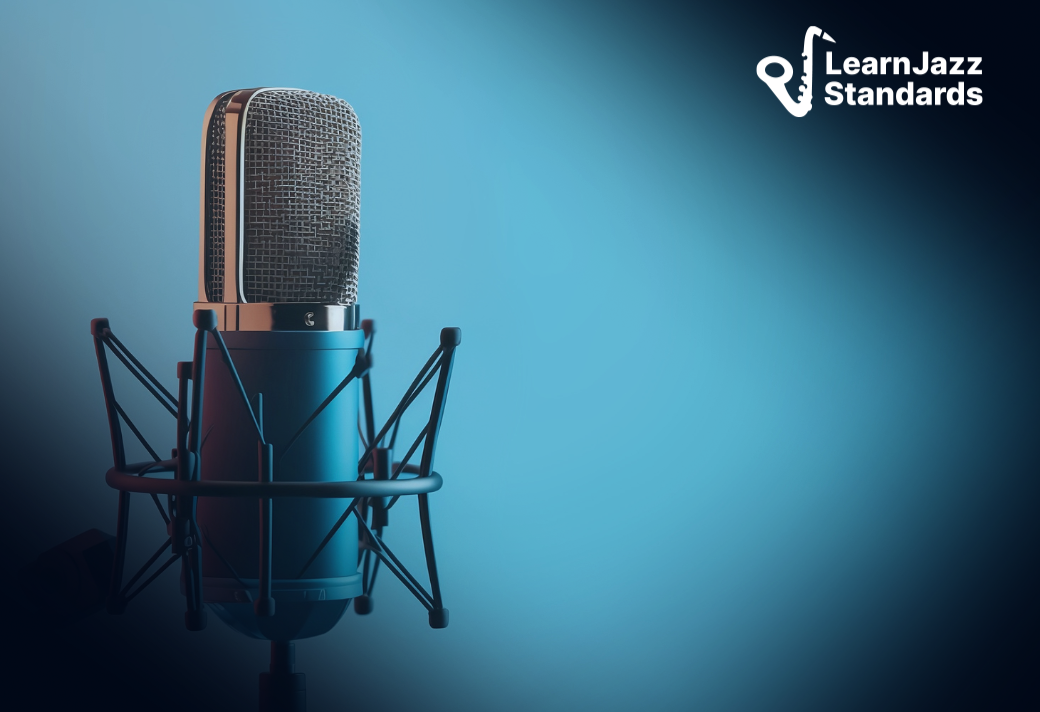I get emails quite often from our readers and podcast listeners who come to Learn Jazz Standards looking for answers. They want to become jazz musicians. In fact, just about all of our jazz community members are here for this reason, and I imagine you are in the same boat.
While everyone comes from different musical backgrounds and exposure to jazz, some reach out to me who feel overwhelmed. Aspiring jazz musicians want to know how to get started but are often overwhelmed by what appears to be a mountain in front of them.
I hear questions like this often:
“Brent, I’m interested in learning to play jazz, but I just don’t know where to start. What steps can I take to start learning today?”
Here’s my answer:
Jazz can feel like an overwhelming style of music to learn when you take the wrong approach. If jazz is a mountain, you must be prepared to climb it. With the right attitude, preparation, and gear, you can get to the top!
That’s exactly what this article will focus on—helping you summit the mountain and reach your jazz goals. We’ll discuss three steps you should take to learn jazz standards the right way and become a better jazz musician.
And, if you like what you read, you should check out the Learn Jazz Standards Inner Circle. The Inner Circle Membership is designed to help you learn jazz standards, improve your jazz improvisation skills, and become a better jazz musician.
With over ten years of incredible jazz education resources, including masterclasses, workshops, jazz standards analyses, and a wide range of courses, the Inner Circle has everything you need to level up your jazz playing.
Come see what the Inner Circle is all about.
Table of Contents
Jazz Standards Contain All the Language and Musical Vocabulary You Need To Learn Jazz Music

By far, the best way to learn any music (or language, for that matter) is to immerse yourself in primary sources. For a language, primary sources are native speakers and media in that native tongue.
For the aspiring jazz musician, the best way to learn jazz is to learn jazz standards.
But you can improve your odds even more by learning jazz tunes the smart way. You want to ensure the language (the licks, lines, chord progressions, and melodies) stick with you as you evolve into the jazz musician you want to be.
If you are brand-new to jazz, I don’t want you to feel intimidated. I want you to know that you can get started today, and you need relatively few music theory skills or genre knowledge.
Don’t get me wrong, you need to understand how to play your instrument on a basic level already. However, you don’t need to be exceptional, and you don’t need to have mastered your instrument by any means.
But if you are looking to jump into jazz with little to no experience, follow along with these three steps:
1. Pick A Jazz Standard And Listen.
Step one has nothing to do with playing your instrument. When it comes to learning jazz or any style of music, you need to be listening. I’m assuming that if you are here, you have some level of interest in jazz, and that means you probably have been listening to it. Good, that’s one of the most important things you can do for your jazz education!
But I want you to hone in on one song for now. Each step will revolve around this one song. Which standard should you pick? Let me suggest four possibilities:
If you click any of these links, you can get access to chord charts, a bio, recordings, and other tools to help you learn these songs.
Why did I choose these?
These tunes are more harmonically simple than most standards in the jazz repertoire (the most difficult being Blue Bossa). These jam-session-friendly jazz standards are common, and two share a chord progression.
Freddie Freeloader and C-Jam Blues are both jazz blues songs, which means their form and chord progressions are the same, though they are in different keys. Learning the blues is important for learning jazz, as the blues is an essential component of jazz.
To dive deeper into jazz blues, check out these 28 blues heads you should learn.
Autumn Leaves and Blue Bossa have longer forms and are more harmonically and melodically complex than the two blues tunes in the list. However, the tune you pick first doesn’t matter because, eventually, you should learn them all!
Your goal for this step is to pick one you want to study and listen to it a lot (like, a lot, a lot). Don’t settle for just one version, either. Listen to as many different interpretations as you can. Search on YouTube, Spotify, Amazon, or iTunes for as many different song versions.
Listen on your commute to work or school, at home, or on a walk.
The idea is to familiarize yourself with the song and internalize it so that when it comes to start learning it, half of the work is already done. How do you know when you know it? You should be able to sing the whole melody from memory.
Not too bad so far, right?
BEFORE YOU CONTINUE...
If you struggle to learn jazz standards by ear, memorize them, and not get lost in the song form, then our free guide will completely change the way you learn tunes forever.

2. Learn The Jazz Standard
You are already familiar with the tune; now it’s time to learn it!
Jazz standards are the vehicles over which jazz musicians improvise, so obviously, learning jazz standards is a really important part of playing jazz.
There are two parts to learning a standard (or any song), and they are:
- learning the melody
- learning the chord progression
Now, the common temptation, especially for a beginner, is to find sheet music and learn the whole thing that way.
But in jazz, the common tradition is to learn jazz standards by ear.
Not only will this help you improve your ear and your musicianship, it will help you truly internalize it. The extra effort will be worth it, trust me!
Learning the Melody:
I suggest starting by learning the melody on your instrument. The melody is the defining part of the song, so it’s a great place to start. You already know how to sing it, so all you need to do is translate what you hear to your instrument.
Listen to the recording and work through it slowly. Play the first phrase or two, stop the recording, and figure it out on your instrument. Once you have learned the entire melody on your instrument, practice playing along with the recording.
This is important!
Learning the Chord Progression:
This is the more difficult one, but I want you to try it. Luckily, with the links I gave you, there are chord charts for all these songs that you can use to help you check your work.
- Listen for bass notes and root movement to get a basic sketch of the progression.
- Try to figure out the chord qualities by “sandwiching” each chord. After figuring out the root note, figure out the top voice and work toward the middle.
- After you have each chord quality figured out, use Roman numerals to perform a harmonic analysis of the tune. This will help you understand the chord progression better and help you take the tune into new keys!
Check out our ultimate guide to 7th chords if you need help identifying the different chords you encounter.
This step is tough, but the more you do it, the easier it gets. Don’t feel bad if you get stuck and need to use the chord chart. Learning harmony by ear is more challenging, but learning standards this way gets much easier after doing it for a while.
Once you have learned the whole song, practice with the recording and follow along with the chords, ensuring you know where you are in the form. Even if you don’t play a chordal instrument, it will help you to play rudimentary piano chords alongside the recording.
For help with that, check out our post on 15 easy piano jazz chords.
3. Learn Jazz Improvisation From The Standard
After learning melodies and chord progressions by ear, the next step is to learn solos by ear. Transcribing solos by ear is a vital part of learning jazz. It helps you internalize the improvisational ideas of the jazz greats and enables you to find your own jazz voice.
When you learn jazz solos by ear, you get to step inside the minds of John Coltrane, Pat Metheny, or Bill Evans and learn how they thought through jazz chord progressions.
Your goal for this step is to pick a version of the standard that features a jazz musician you like and want to emulate. Go phrase by phrase and try to match their articulations on lines they play over the tune.
For an added challenge, transcribe a solo from an instrument you don’t play. If you are a guitar player, try transcribing a saxophone or trumpet solo. If you play saxophone or trumpet, try transcribing a piano solo.
If you don’t know where to begin, I suggest my students learn the Miles Davis solo on Freddie Freeloader because he plays very simple melodic language. It’s accessible to almost any skill level, yet is a great example of how to navigate those chord changes.
For more ideas, check out these five easy jazz solos you can learn.
If this process of learning jazz standards seems challenging to you, don’t sweat it! Nothing new is ever completely easy, and most of these challenges get easier over time. Make it your goal today to start your jazz journey and complete these first steps!
Reach Your Jazz Goals and Become A Better Jazz Musician With The Learn Jazz Standards Inner Circle
Ready to take your jazz playing to the next level? The Inner Circle helps you learn jazz the smart way by teaching you the processes and strategies for achieving measurable growth in your jazz playing.
Whether you need help with your particular instrument or you need help with jazz improvisation or theory, the Inner Circle has the resources you need to reach your jazz-playing goals.
What are you waiting for? Come see what the Inner Circle has to offer!











